-
Contributing Member


Short headspace maybe causing it?
-
-
01-07-2018 03:57 PM
# ADS
Friends and Sponsors

-
Advisory Panel



Originally Posted by
ed skeels

Short headspace
I wouldn't think so...
-
-
Legacy Member

my recipe 40.5 grains of Imr 4895 an if unavailable the same charge with either H4895 or Varget. Trim length is 2.004. Make sure you clean out the primer pocket at least every other reload and make sure the primer is slightly lower than the case rim (catch a finger nail on it). The slam fire is usually due to the free floating firing pin hitting a soft primer (Federal) I use CCi 200. It all works pretty well in my Scout
-
-
Legacy Member

"...guard against slam fires..." Seat the primers correctly and that won't happen. It's incorrectly loaded ammo that causes slam fires, not the rifles.
CCI "Milspec" primers are nothing more than magnum primers. Magnum primers have the same cup as any other primer.
Only ever used IMR4064(I think it was. Not at home to check.) out of a semi'd Winchester M-14. Not long after I bought the thing and worked up the load our idiot government decided they'd copy the ATF's "Once an MG always an MG" idea. Had a nice deer load using 150 grain Winchester Silvertips(the semi-jacketed with the Al cap bullet) too.
One needs to remember that you must FL resize every time, check case lengths and watch OAL for any semi-auto.
SA Inc. voids their warrantee if you use reloads in an M1A too. Only covers defects in workmanship or material anyway. And only applies to the original retail purchaser.
too. Only covers defects in workmanship or material anyway. And only applies to the original retail purchaser.
Spelling and Grammar count!
-
-
Legacy Member

I have extensive experience loading for the M1/M14/M1A . 15 years on my states High Power rifle team. Many of those years I fired a gov't issued M14NM.
. 15 years on my states High Power rifle team. Many of those years I fired a gov't issued M14NM.
1. The cartridge case.
The M14/M1A design is very hard on the cartridge case. You need to use USGI cases or equivalent. USGI cases are thicker and harder than commercial cases. There is about a 10% difference in internal volume and weight between a Lake City (LC) case and a Winchester. It is therefore important not to use data that has been worked up in commercial cases and arbitrarily load it into a LC, WCC, or other equivalent military case.
You need to full length size the cases, but I've never found it necessary to use a small base die for any of the M1's and M1A's I own. When you adjust the sizing die, it's best to use a RCBS case mic to make sure the cases are sized enough to ensure reliable chambering, but not sized too much as that will shorten case life by making it stretch more with each firing. Make sure the bolt will fully close on the cases and extract easily before locking down the die.
Even with LC brass, the rule of thumb is after 4 firings, (1 factory firing and 3 reloads) that you retire the case. The M14 gas system starts to unlock the bolt while there is still some pressure in the chamber/bore and the brass will stretch about .005" each firing. Monitoring case length and trimming back to 2.005" is something you don't want to forget to do.
It is also best practice to use a carbide cutter made for the purpose to recut the primer pocket to OEM depth to ensure the primer can be seated .002-.004 below flush to prevent slam fires.
I personally have only used LC cases in both the Team M14 I was issued, and my personal M1A's. Jeff Bartlett and Pat's reloading both have once fired LC cases for sale.
2. Primers
I have used both Winchester and Remington primers with total satisfaction. I also knew others that used the Federal 210M. I used these two brands for the simple fact that at Camp Perry, these were available in case quantity at bulk pricing, and CCI's were not. I would not hesitate to use CCI primers though.
I have never had Winchester or Remington primers either pierce or leak around the primer. If you use good brass and use tried and true loads that are loaded to proper pressure levels, you will not have a problem. This is assuming the gun is in top shape and the firing pin tip is good.
It is a common misconception that the white box CCI Mil-spec primers have either thicker or harder cups. What CCI does to makes the primers more resistant to slam fires is to make the primer mix slightly less sensitive, which achieves the same goal.
3. Powders
If you consult a powder burn rate chart that shows all brands of powders, the range of powders that are usable in the M14/M1A spans about 16-18 powders. As noted, 4895 is a top pick and used to be the powder loaded in LC Match ammo years ago. Later, they switched to Ball powder. My personal favorite for short line ammo with the 168SMK was AA2520. For long range, I used the 175SMK and Varget.
4. Bullets
If you want match quality results, you need to use match grade bullets. While the pricing on 147gr. FMJ surplus bullets looks appealing, the results they give is OK for blasting ammo, but you are not going to run with the pack in a match with it. Even ordinary hunting bullets will outperform the surplus 147gr. bullets every time.
As with all components, buy in bulk to get better pricing. Go in with some friends to spread the cost if you need to. Also keep an eye out for when Midway and other sellers have "Blem bullets". Sometimes match bullets will be available at a substantial savings.
Here's some pics of what was discussed above.
LC case.
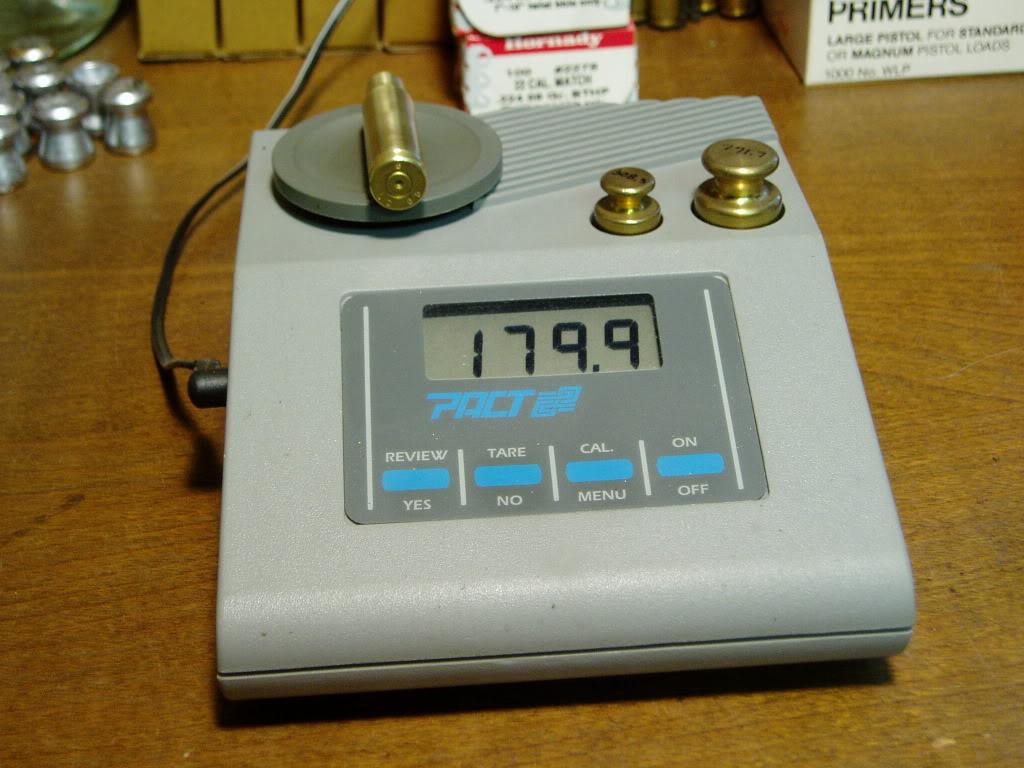
Winchester case.
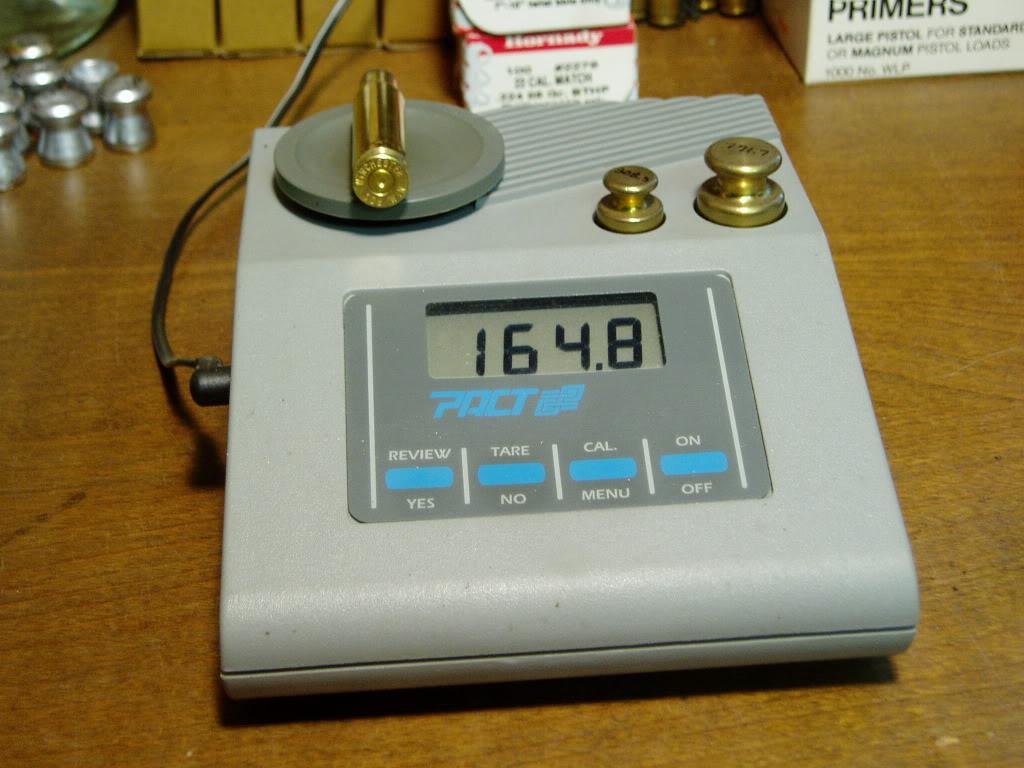
Sinclair carbide primer pocket cutters for large and small primers. 2 seconds with a cordless drill is all it takes.
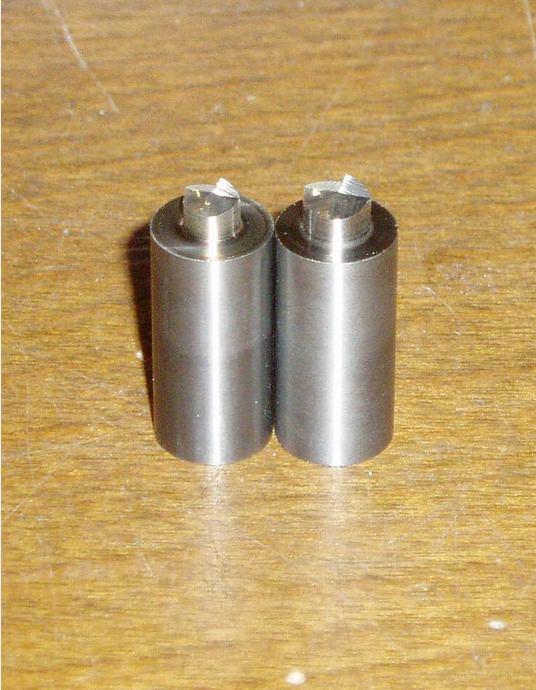
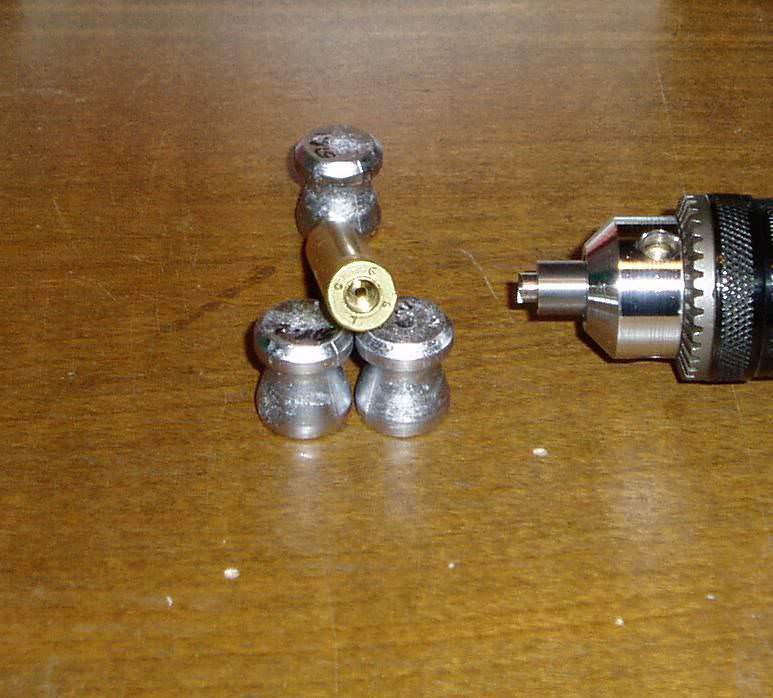
Primer seated below flush.
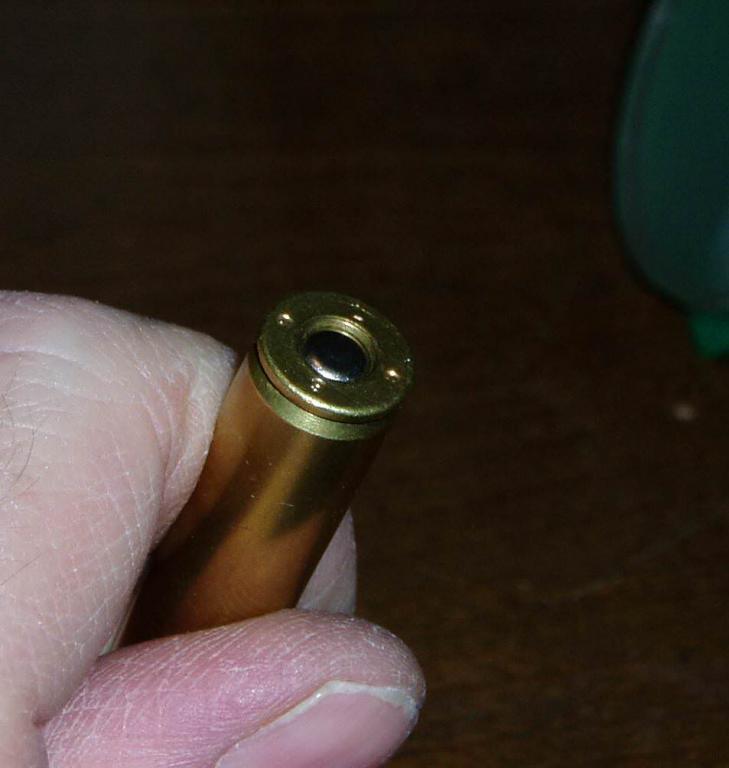
RCBS case mic.
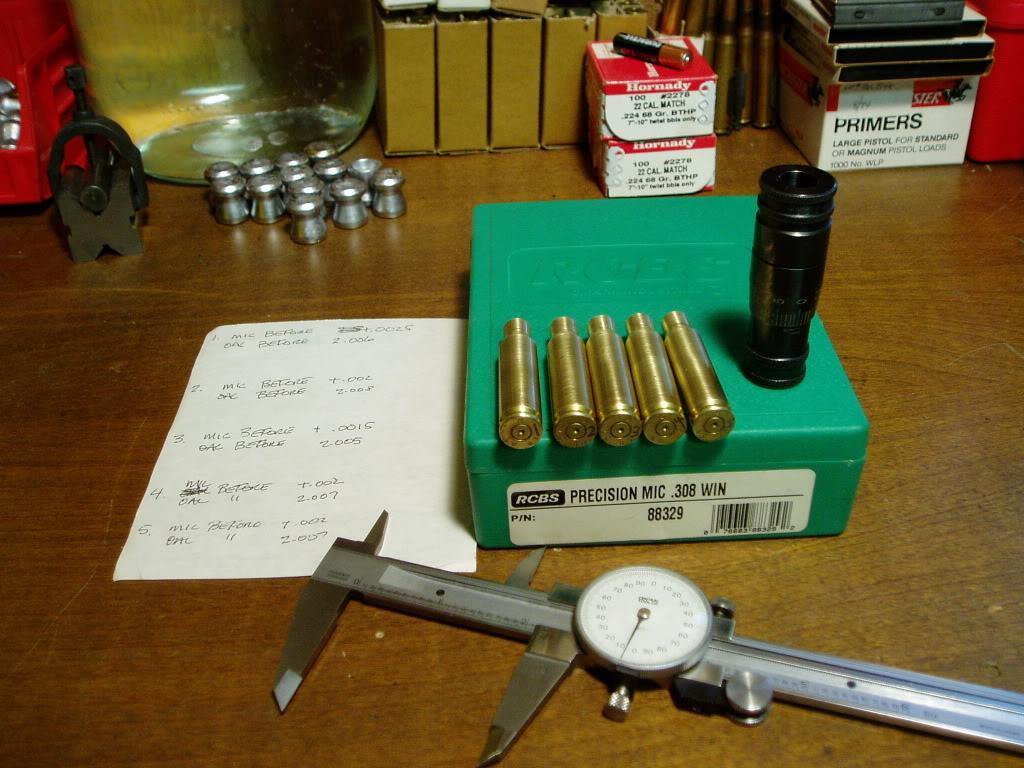
A wee bit of once fired ready to load cases from my rifle team days. We were allowed to keep all the brass we fired. Once it had 4 firings on it, I would trade it to a military or NG shooter (who had to turn it their brass) in exchange for once fired. That way you continually regenerated your brass supply for free.
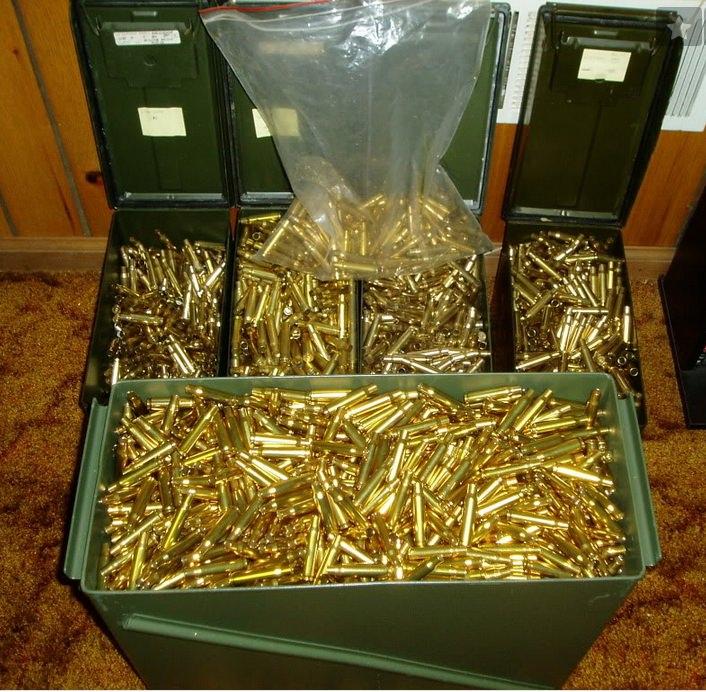
My team issued M14NM. I personally fired over 11K documented rounds through that rifle wearing out 2 barrels in the process.
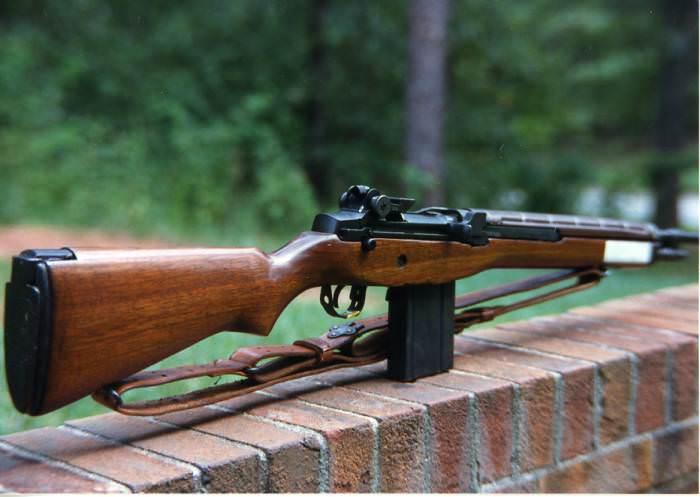
-
The Following 3 Members Say Thank You to no4mk1t For This Useful Post:
-
Contributing Member


I have best results with Varget and 168gr Amax in my NM. Working on H4895 and 168gr SMK's, but no gold star yet.
"He which hath no stomach to this fight,/ Let him depart." Henry V
-
-
Legacy Member

CCI primers are allegedly "harder" than the rest, though I have use Remington 9 1/2, Winchester WLR, Brand X Russian stuff, RWS and sundry others with equal reliability.
stuff, RWS and sundry others with equal reliability.
Here in Oz , the "magic" 7.62 x 51 load for many of us was 42.5 gn of Mulwex (ADI) AR2201, a now LONG discontinued powder, topped with the Mil-spec Oz 144gn BTFMJ ball bullet.
The old AR-2201 was just a tiny bit "faster" than 3031. General "rule of thumb", pre affordable chronographs; was whatever was listed for 3031, knock it back one or two grains and head for the range. It was replaced in service by AR2206, which is very close to BLC2. This seemed to occur with the change of 7.62 NATO ammo from the eclectic L2A2 stuff to the "closer to NATO spec" F4.
The latest (known) update is AR-2206H, which is pretty much the same as, if nor identical to, H4895 and/or IMR 4895. The interesting thing was that the earlier AR-2201 was definitely graphite coated and the later "equivalents" were not. Some years after the introduction of AR-2206, I had several cans of the stuff go "off", to the point where the degraded powder rotted out the cans and had a VERY nasty "vinegar" smell and a "gooey" consistency. Straight on the garden as VERY EXPENSIVE fertilizer.
-
Thank You to Bruce_in_Oz For This Useful Post:
-
Advisory Panel



Originally Posted by
Bruce_in_Oz

a "gooey" consistency
I pulled apart some century old Krag ammo with the same discovery, some were perfect and others were basically back to liquid form...
ammo with the same discovery, some were perfect and others were basically back to liquid form...
-
-
Legacy Member

Reloading for M1As
Well, I fired my first batch of reloads in my M1A following all of you guys advice plus what I have read in my manuals...so far so good! I read a lot about slam and out of battery fires. I also read about accidentally firing doubles due to improper trigger and grip technique. A question that I have is...is accidentally firing a double the same as a slam fire, or is the bolt locked enough when this occurs?
following all of you guys advice plus what I have read in my manuals...so far so good! I read a lot about slam and out of battery fires. I also read about accidentally firing doubles due to improper trigger and grip technique. A question that I have is...is accidentally firing a double the same as a slam fire, or is the bolt locked enough when this occurs?
-
-
Legacy Member

If the trigger mechanism components are all to "Mil Spec" things will be OK. Fooling around with the length and engagement angle of the various "hooks" is a recipe for "interesting times".
The USAMTU "match conditioning" handbook is probably available from several sources on these here tubes.
Back when Australia still had a sense of humour, I did several AMTU-style re-works on both REAL M-14s and on M-1As,. Alas, all I have now are the memories.
still had a sense of humour, I did several AMTU-style re-works on both REAL M-14s and on M-1As,. Alas, all I have now are the memories.
If all components are in good condition, "slam-fires" should NEVER occur, especially "out of battery". The system is designed to keep the striker rearwards until the bolt locks up and the "tail" of the striker aligns with the cut-out in that little web section that supports the rear of the bolt. IF a round sustains a "minor" indentation on bolt closure, as is also common in the AR-15 platform, numerous successive re-chamberings of the same round MAY sensitize the primer to the point that "just one more wafer, Mister Creosote" MAY set it off, but not fully out of battery.
IF your M-14 / M-1A striker has no "tail", the bolt support web is seriously damaged, and the striker is held forward by rust or other crud, you definitely have a problem.
After Godliness, cleanliness is next to staying alive / intact.
That said, in the event some slack individual has allowed crud and corrosion to accumulate in the striker hole in the bolt, all bets are off. I have never seen a "slam-fire" with an M-14, but a couple with very poorly maintained SKS carbines, where the striker was "frozen" forward with crud and rust.
-















 PM
PM


















